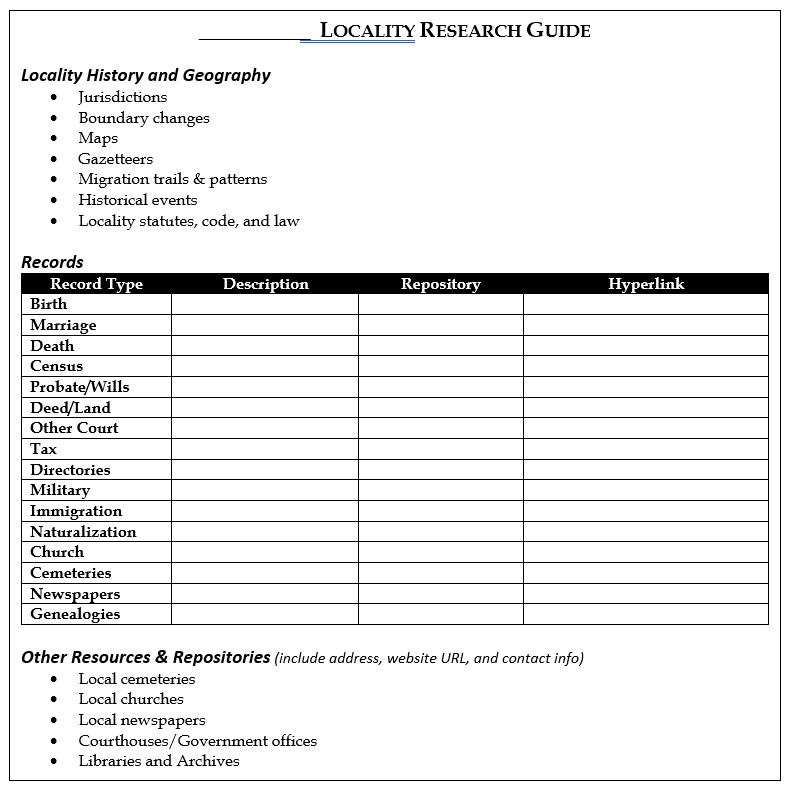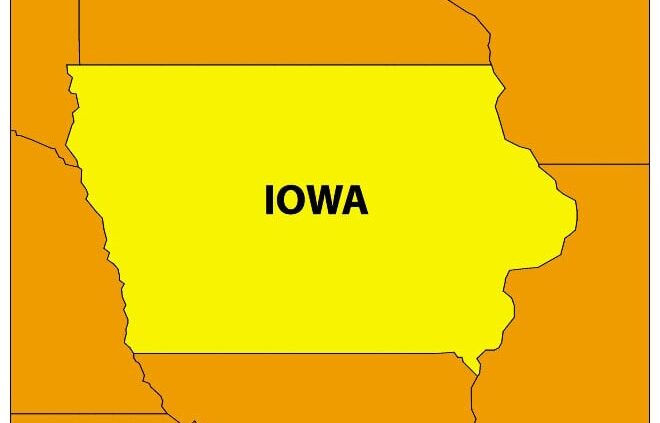Locality Research Guides (LRG) are an essential part of the successful genealogist’s took-kit. These should be created for every location where records must be examined to accomplish reasonably exhaustive research.
What to include in a Locality Research Guide:
- History and Geography, including
- Basic locality history
- Jusidictional changes
- Maps
- Records available online, including
- Description of the record
- Inclusive dates of the record
- Online repository and URL
- Records available in offline repositories, including
- Description of the record
- Repository name, address, phone number
- Call number
- Repository website URL (if applicable)
Online records are often available through:
- State Historical and Genealogical Societies
- Library of Congress
- National Archives
- FamilySearch.org
- Numerous commercial websites
- Other miscellaneous online databases
Offline repositories often include local and state libraries and archives, local and state genealogical and historical societies, county/city government buildings and courthouses, local cemeteries and churches.
How to create a Locality Research Guide
There are several websites from which the pertinent locality information can be easily extracted.
- First and foremost, determine whether a published locality guide for your research area already exists by searching:
- Google, for published research guidebooks for the location
- National Genealogy Society Research in the States series
- FamilyTreeMagazine.com
- Library of Congress Research Guides: Local History & Genealogy Research Guides
- Search for the location in the FamilySearch Research Wiki (e.g. Pike County, Ohio Genealogy).
- Search for the location in the FamilySearch Catalog.
- Search for the location in Cyndi’s List.
- Search for the location in Linkpendium.
Your guides should contain whatever information you believe will help you efficiently and effectively perform research in the locality. And, don’t forget to organize your guide to make it user-friendly.


